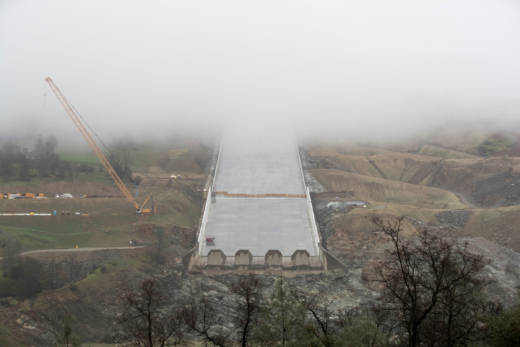The California Department of Water Resources announced Friday that the cost of last year's Oroville Dam spillway failure and ongoing reconstruction effort has grown to $870 million, a tab that the state continues to hope is paid largely by federal taxpayers.
That new cost estimate includes $210 million in previously untabulated project costs and represents a 30 percent jump from an estimate released last fall.
DWR also said Friday that several of the new concrete slabs placed as part of the spillway project may need "corrective action" because of "surface imperfections" that arose because of problems that occurred during the 2017 construction season.
In a construction update briefing, DWR spokeswoman Erin Mellon said that the revised $870 million figure includes:
- $500 million for rebuilding the shattered main concrete spillway and efforts to reinforce the adjacent hillside that serves as an emergency spillway. The original estimate for the work, being performed by Kiewit Infrastructure West, was $275 million.
- $210 million for related work, including removing debris and sediment from the Feather River, replacing power lines, building access roads, payments to consultants and staff time. Friday's report was the first explicit statement of these related recovery costs. Mellon said she could not offer a breakdown of the specific costs that added up to the $210 million figure.
- $160 million for the emergency response during and for two months after the main spillway failure and subsequent severe erosion of the emergency spillway that led to evacuation orders for 188,000 people downstream of Oroville Dam. DWR had announced this subtotal last year and noted it was substantially less than earlier estimates.
Mellon said DWR has reported the $870 million estimate to the Federal Emergency Management Agency, which reimburses up to 75 percent of the costs of federal emergencies. So far, FEMA has reimbursed DWR $86.9 million, or exactly 75 percent, of the first $115.9 million in detailed costs the department has submitted.

